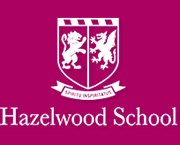
War Memorial
| Captain Owen HUGHES DFC | |
|
10th Battalion Worcester Regiment and 31 Squadron, Royal Flying Corps Date of birth: 7th July 1889 Date of death: 4th June 1972 Died aged 82 Unknown |

|
| Owen "Guy" Hughes was born at "Wallfield", Reigate in Surrey on the 7th of July 1889 the second son of Frederick Hughes, a stockbroker and Alice E. Hughes of Reigate. He was educated at Hazelwood School where he was a member of the 2nd Football XI in 1899 and of the Football XI in 1900, and was a member of the Cricket XI in 1900, 1901 and 1902. The school magazine wrote the following on his 1900 cricket season: - " A useful point, who catches every other one. His batting is vigorous, very rustic at present, with good promise." They wrote of his 1901 cricket season: - "A good style of bat; very uncertain; gets out with the easiest ball when well set, and is a half-hearted hitter, but when he elects to play a correct game and keep the ball along the floor he looks all over a first rate bat. A good field at point, but not yet safe." Of his 1902 cricket season they wrote: - "Rather disappointing at first, appears to have too many nerves, but came on towards the end and has made the highest score in a game, 136, on record." They wrote the following on his 1900 football season: - "Goalkeeper. Has scarcely fulfilled his early promise; possesses any amount of pluck and dash, and effects many daring saves. In crucial moments however he loses his presence of mind; must beware of "carrying" the ball; has slightly improved his place kicking." He went on to Malvern College where he was in Swann House from May 1903 and was a member of the Cricket XI for two years. In 1908 he matriculated for Clare College Cambridge where he played Varsity football as goalkeeper and, in 1910, at Cricket, where he played as wicketkeeper and averaged 21 with the bat in 6 appearances for the University. On leaving university in 1911 he moved to Singapore where he worked as an assistant for the Asiatic Petroleum Co (SS) Ltd. He was in Kuala Lumpur at the outbreak of war and returned to join the army from Singapore arriving at Plymouth on board the SS “Malawa” on the 25th of January 1915. He was commissioned as a 2nd Lieutenant in the 10th (Service) Battalion Worcestershire Regiment, but undertook flight training and passed his Aero Club certificate (number 1470) on the 25th of July 1915 at the Military School at Farnborough flying a Maurice Shorthorn biplane. He transferred to the Royal Flying Corps as a Flying Officer with the rank of 2nd Lieutenant on the 2nd of September 1915. He joined 21 Squadron at Hounslow for further instruction on the 21st of September 1915 and was posted to the newly formed 31 Squadron at Farnborough for operational flying on the 12th of October 1915. The squadron deployed to Risalpur on the North West Frontier of India on the 26th of December 1915, where they operated BE2cs and Maurice Farman aircraft against dissident tribes in the area. He was promoted to Captain and to Flight Commander on the 1st of February 1917. On the 5th of March 1918, the squadron received a request for assistance with from British forces at Ghazi Khan where trouble was expected. Owen Hughes flew to Lahore from where he took a train to Multan. He then travelled by car to Ghazi Khan where a small airstrip had be constructed. He requested more resources and two aircraft were flown there with ground crews and equipment travelling over land to join him to commence operations. Following reconnaissance missions by the two aircraft, operations commenced on the 13th of March when the two aircraft bombed Rakhindi village and a party of tribesmen at Bawatta Post. On the 25th of March, Owen Hughes bombed a hostile gathering near Barkham with his bombs seen to fall among a group of about 100 people. Their final mission was carried out on the 3rd of April 1918 with the bombing of Kahan which ended all further resistance and the party returned to Risalpur. He was awarded the Distinguished Flying Cross "In recognition of distinguished services rendered during the war" which was announced in the London Gazette of the 3rd of June 1919. He was mentioned in despatches for "valuable services rendered in connection with the military operations on the North-West Frontier of India during the period 1st April 1917 to 31st May 1918 which appeared in the London Gazette of the 18th of May 1920. During his service he had flown the Maurice Farman Shorthorn and Longhorn, H.F. Caudron and the BE2c and BE2e types. He was demobilised at Bombay on the 17th of March 1919 and embarked on a ship bound for Singapore the same day. He was placed on the Unemployed List on the 25th of March 1919. He was married to Eileen Armstrong Chauntrell (nee Hughes) at St Mary's Church, Reigate on the 20th of September 1915; they had a son born on the 16th of October 1920 and lived at “Wallfield”, Reigate in Surrey. From 1930 he worked as a coffee planter in Kenya at Gulmarg Kiambu. The family later moved to Jersey and lived at Le Val Lodge, St Brelade. He died at Beaumont, St Peter, Jersey in the Channel Islands. |
|
| Went on to Malvern College |
Back